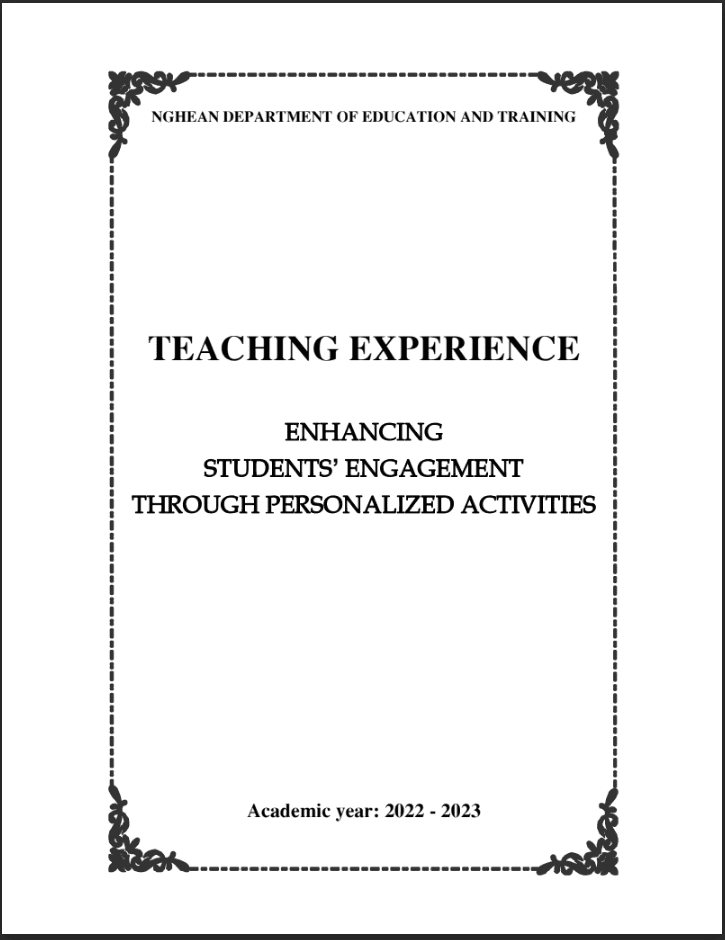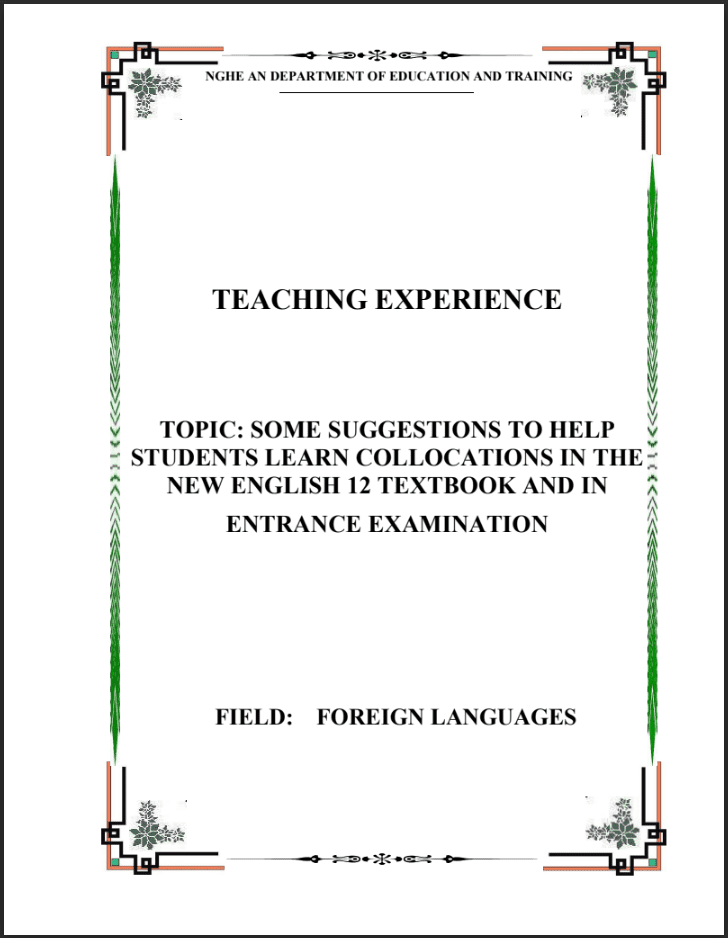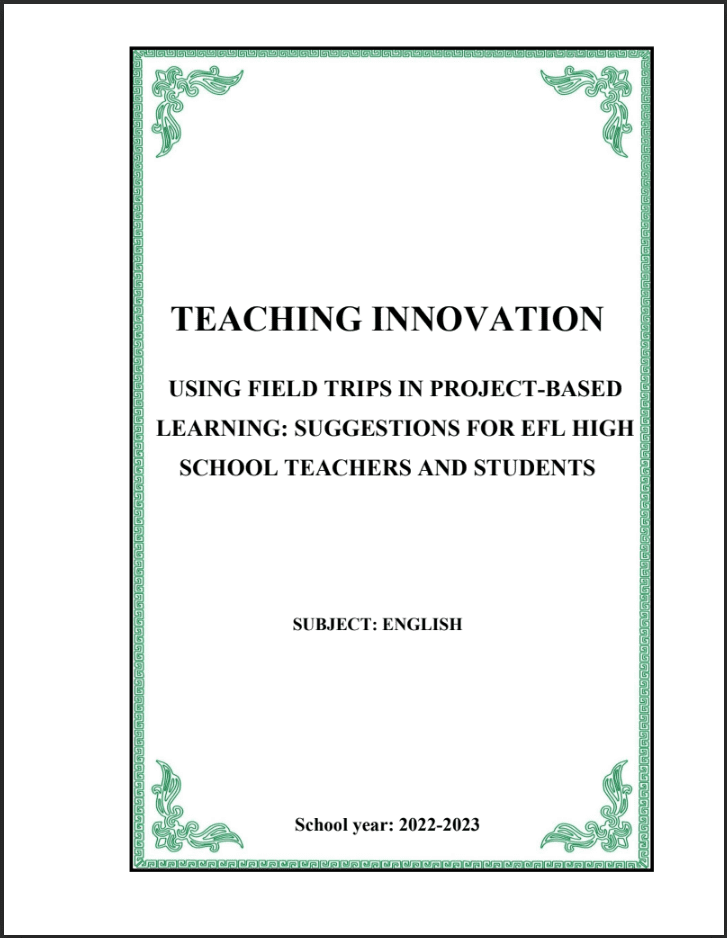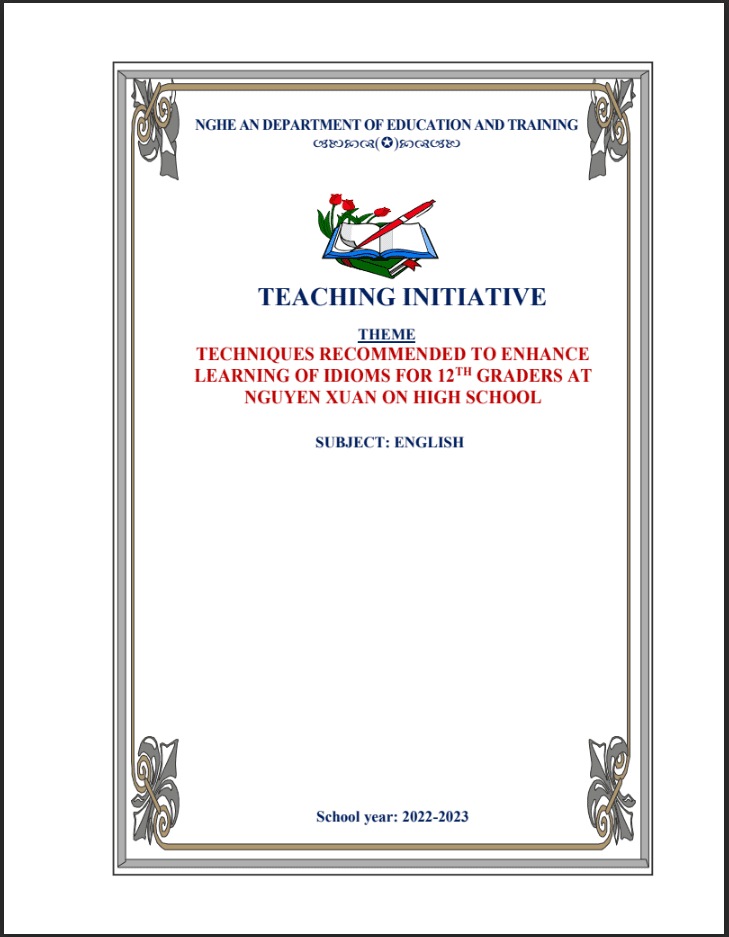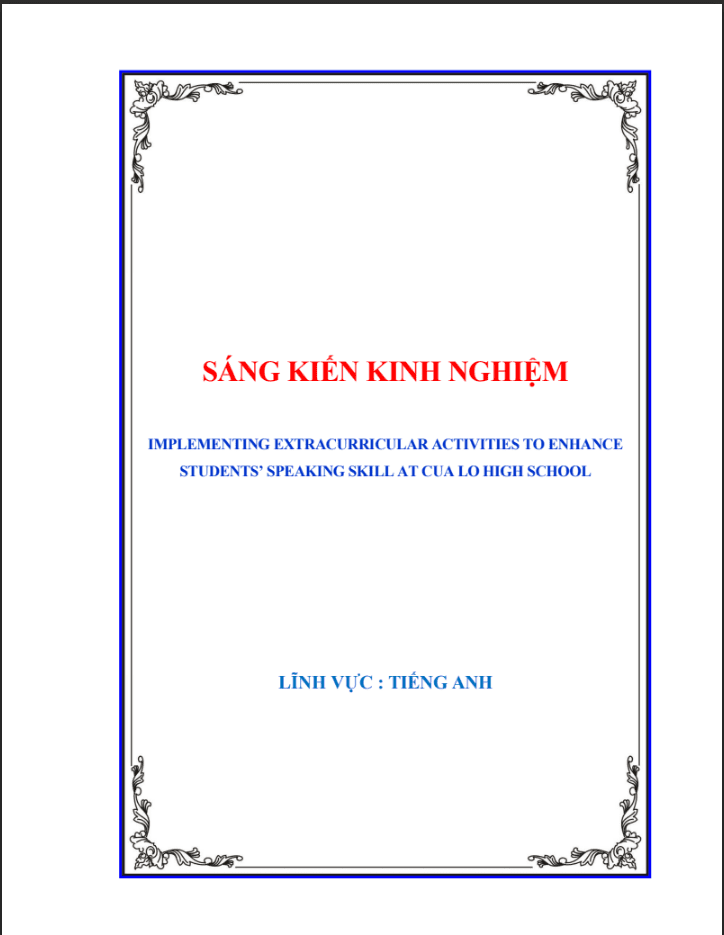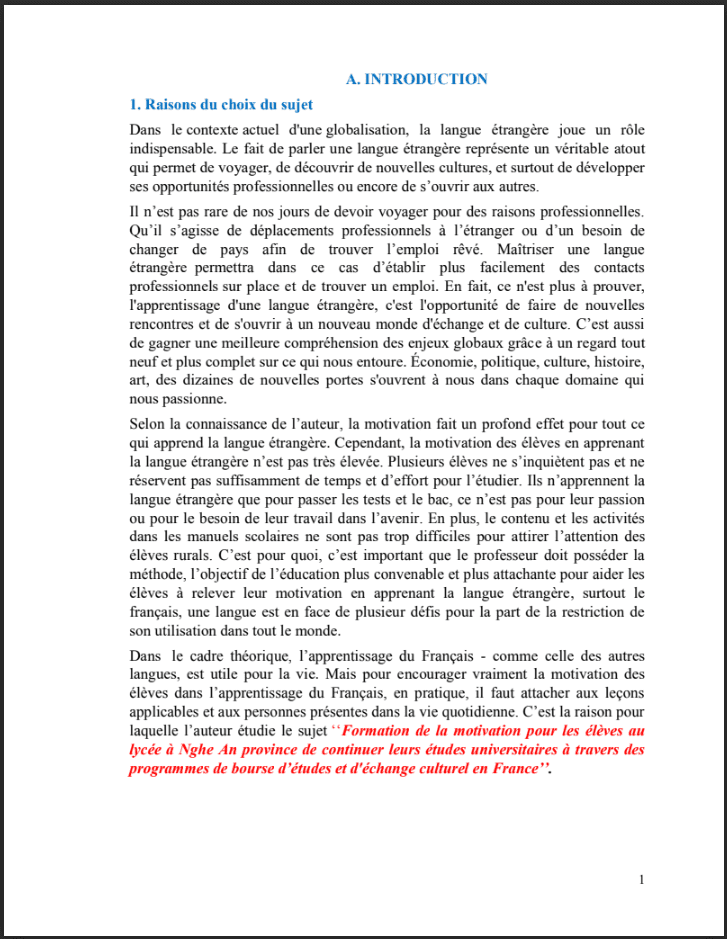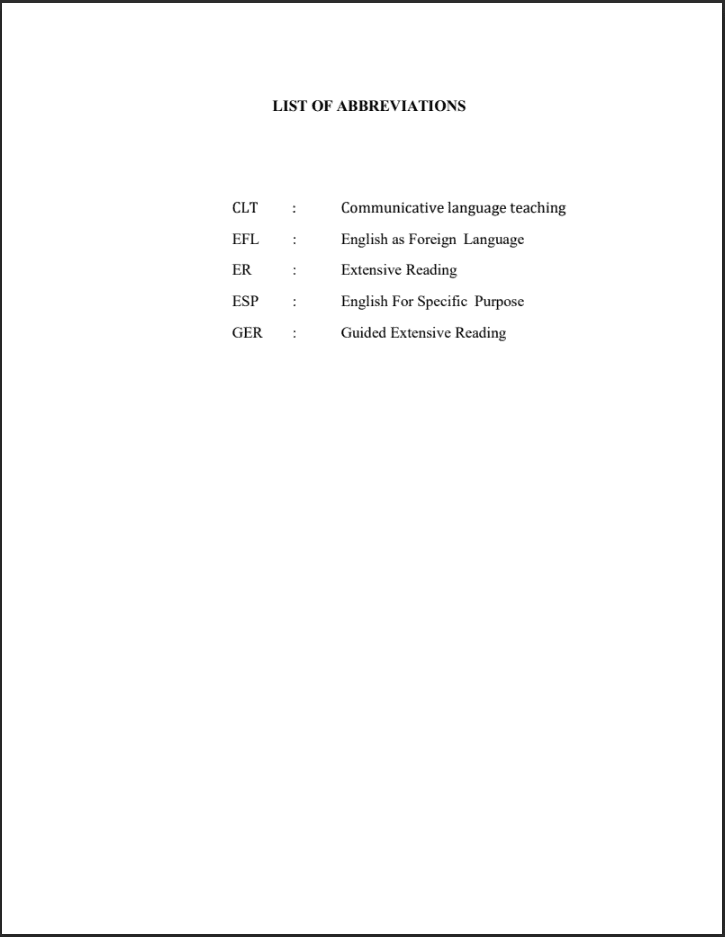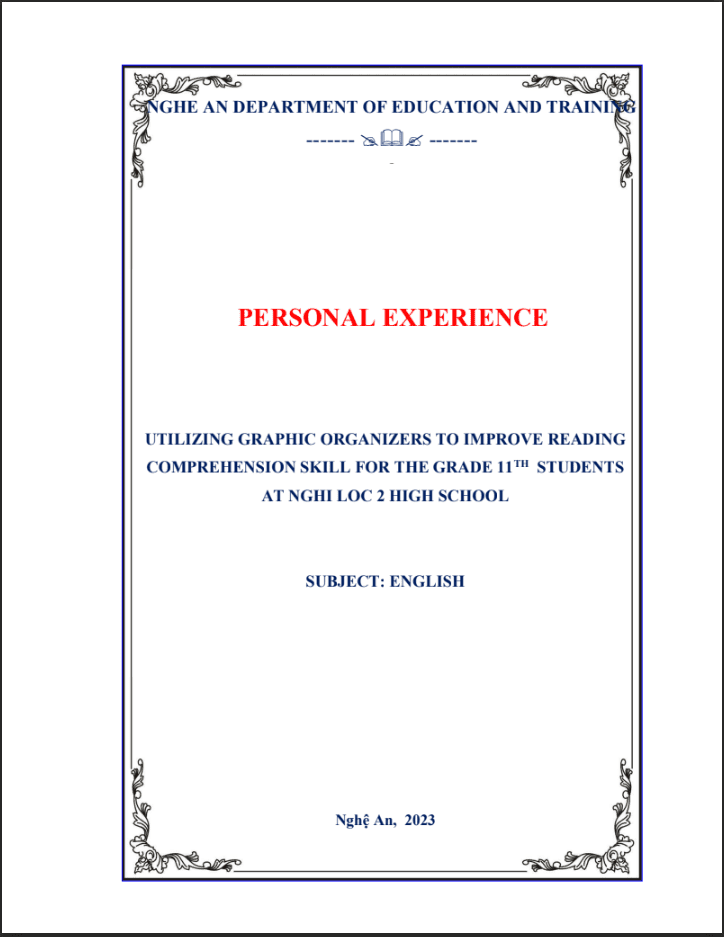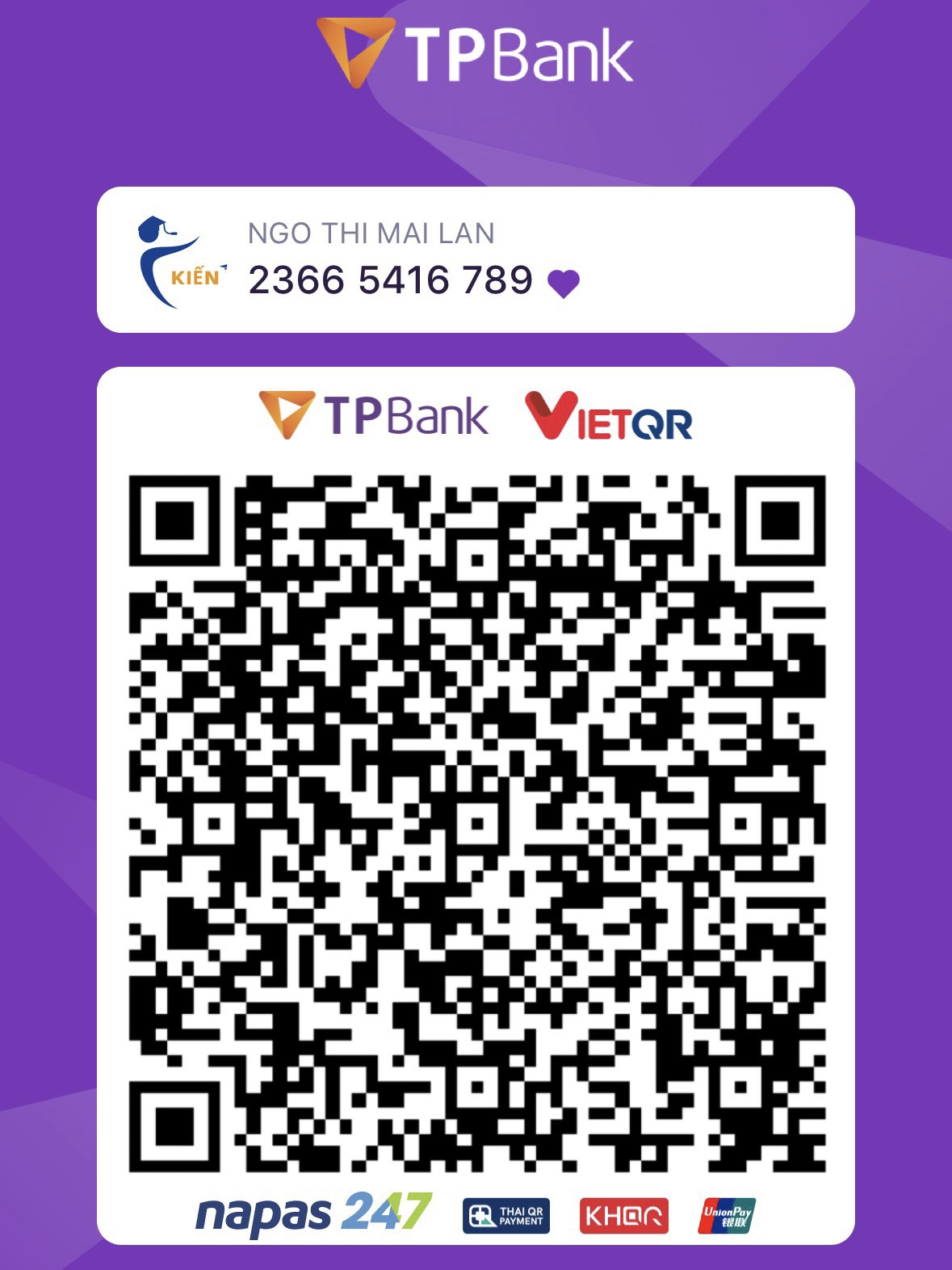SKKN Enhancing students’ engagement through personalized activities
- Mã tài liệu: MP0103 Copy
Giá:
| Cấp học: | THPT |
| Môn: | Tiếng Anh |
| Lớp: | |
| Bộ sách: | |
| Lượt xem: | 431 |
Sáng kiến kinh nghiệm “Enhancing students’ engagement through personalized activities”triển khai gồm các biện pháp nổi bật sau:
Mô tả sản phẩm
PART 1 INTRODUCTION
- RATIONALE
English is becoming increasingly vital in our modern life. It is not simply a
compulsory subject in the national curriculum, but also plays a key role in
preparing students for integrating with the English speaking world. Therefore,
teachers are making every effort to innovate the teaching methods to achieve the
goals of the new curriculum, one of which is to ensure that students will be able to
use English as a means of communication at a certain level of proficiency in four
macro skills: listening, speaking, reading, and writing.
However, it can easily be seen from the result of GCSE examination every
year that this expected outcome for English learners seems to be far-fetched as the
majority of high school students are found to be at very low level of English
proficiency. Numerous reasons may be to blame for this problem. Firstly, students
of all grades, especially high school students have struggled to meet the
requirements of the new curriculum. Not only do they have to be good at grammar,
vocabulary well enough to pass the GCSE examination but they also have to
master the four skills: listening, speaking, reading, and writing. The more they feel
overwhelmed, the less they are motivated to engage in the lessons. Moreover,
when working in pairs or in groups, frequently used activities in most of English
lessons, more advanced learners tend to participate more actively while weaker
learners seem to be too dependent on them to complete the task. In other words, the
stronger students even dominate whereas the weaker ones do not even try, which
may result in their frustration, boredom, loss of concentration or disruptive
behaviors.
For these reasons, it is important for the teacher to encourage students to be
aware of their responsibilities and actively involved in all activities. Learning is a
fluid activity, no student learns the same way or at the same pace. Personalized
activities empower each student to take responsibility for their learning, which
means that they will spend more time learning and actually absorb the materials.
Therefore, it will also enhance and improve their engagement. Additionally,
greater engagement also leads to high levels of motivation within students. This
motivation will also prevent distractions, disengagement from learning materials,
and overall poor performance in their studies.
From the reasons above, I have seen the need to create personalized
activities to enhance students’ motivation and engagement and therefore would
like to do a research entitled: “Enhancing students’ engagement through
personalized activities”
1
- AIMS OF THE STUDY
The study will focus on exploring the effects of personalized activities on
students’ motivation and engagement in lessons.
III. THE SCOPE OF THE STUDY
This study was carried out among eighty nine 11th graders’ from class
1
1A2 and 11D2 at Nam Dan 1 high school, who will be taught by personalized
activities.
- METHODOLOGY
This research is a combination of qualitative and quantitative methods. The
data will be collected via survey questionnaires, the pre-tests and post-tests..
2
PART 2 CONTENT
- THEORETICAL AND PRACTICAL BACKGROUND
1
. What is a personalized activity?
A teacher can group their students in many different ways. One option is to
have the students work alone. A large amount of research early on
personalized or individualized productivity with various conclusion. Johnson
and Johnson (1984) defined personalized work as a concept: pupils have to
―work independently on their own learning goals at their own pace and in
their own space to achieve a preset criterion of excellence‖. The task bases on
the acquisition of simple skills or knowledge or on specific facts. No
interdependence is supposed to occur among students and they all expect to be
left alone by their classmates, every leaner has his/her own separated space;
therefore, the teacher is the main assistant, each student has the needed material at
his/her own disposal. The evaluation implies some objectives that any pupil can
reach individually. The term can be used to speak about a product (e.g. a personal
production), an activity (e.g. an individualized exercise), a moment (e.g. period
of separation during group activities) or a situation (e.g. working on your own).
2
. Benefits of personalized activities in foreign language teaching and
learning.
―All students can learn and succeed, but not in the same way and not in the
same day‖ Spady, W. (2005). I have been considering this quotation as a principle
applied to students in my classrooms. According to this quote, what works best for
some students may not always be the most effective approach. As a result, many of
them may give up trying because of considering themselves not being ―good at‖
certain subjects. Simply lecturing and then assigning homework from the textbook
likely will not reach the vast majority of our students. Students not only learn in
different ways, but they learn at different rates. Some students learn concepts
easily the first time around, while others require more time and attention.
Therefore, if we really want no child to be left behind, we need to focus on making
changes in teaching methods rather than placing much emphasis on standardized
tests. For these reasons, personalized activities can be a great help for teachers.
Personalized or individualized activities help students to develop the
capacity to learn without always relying on others. This can lead to some sense of
learner autonomy, which is a critical goal of many teachers. As students rely on
their own resources, it strengthens them in learning to work on their own.
Moreover, these activities allow teachers to create students’ individual profiles and
work out measures to improve their grades. After a noisy whole-class or group
project experience, individual work can be used as a classroom efficient tool for
students to reinforce and evaluate their knowledge.
3
Bill Meiye, B. (2008) pointed oủt some evidence of the benefits of
independent learning, including:
improved academic performance;
increased motivation and confidence;
greater student awareness of their limitations and their ability to manage
them;
enabling teachers to provide differentiated tasks for students;
fostering social inclusion by countering alienation.
Additionally, teaching Encyclopedia (2023) further specified some of the
pros of individual learning which enable learners to:
gain independence to think things through on their own;
improve confidence in working through a problem, even when they don’t
feel certain about every step;
work at their own level, rather than having to adapt to suit their group
members;
practice self-control—both in staying focused on the task at hand, and in
having the willpower to avoid turning to a neighbor or asking the teacher
for the answer;
get more comfortable taking actions on their own;
gain creativity and effective thinking processes that can apply to problem
solving across a range of subjects and types of issues;
Due to these immense benefits, I have taken personalized activities into
consideration and applied in my lessons to achieve the best results and a rewarding
experience.
3
3
3
TÀI LIỆU LIÊN QUAN
100.000 ₫
- 6
- 434
- 1
- [product_views]
100.000 ₫
- 2
- 507
- 2
- [product_views]
100.000 ₫
- 9
- 546
- 3
- [product_views]
100.000 ₫
- 4
- 409
- 4
- [product_views]
100.000 ₫
- 2
- 595
- 5
- [product_views]
100.000 ₫
- 0
- 538
- 6
- [product_views]
100.000 ₫
- 1
- 439
- 7
- [product_views]
100.000 ₫
- 5
- 578
- 8
- [product_views]
100.000 ₫
- 1
- 596
- 9
- [product_views]
100.000 ₫
- 3
- 509
- 10
- [product_views]

